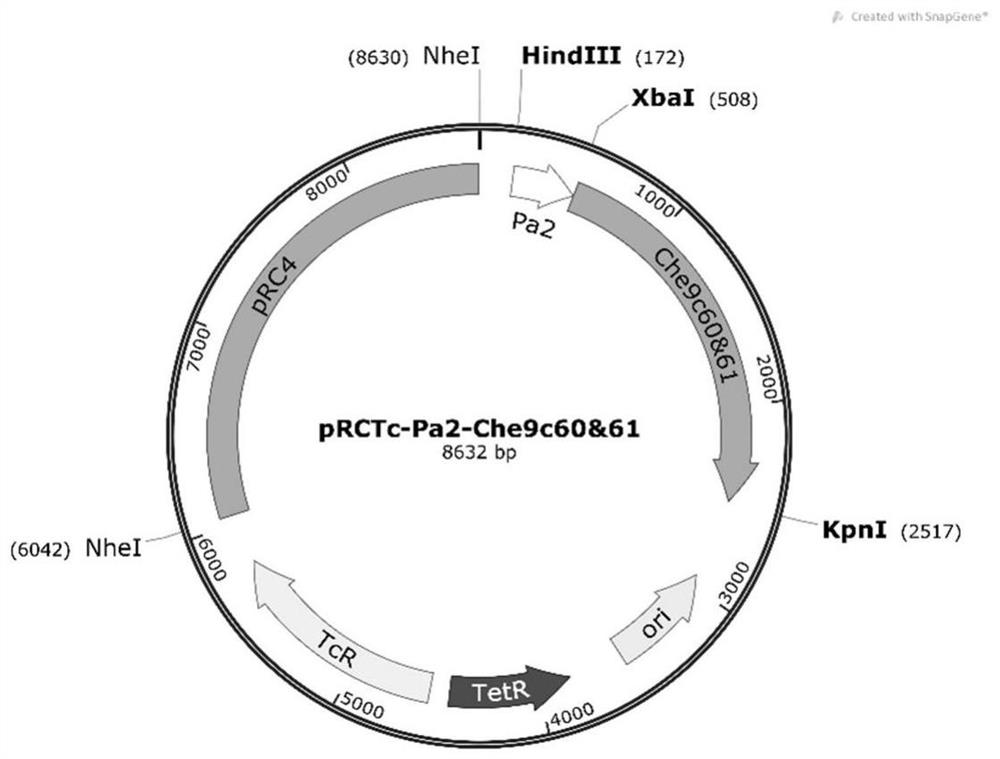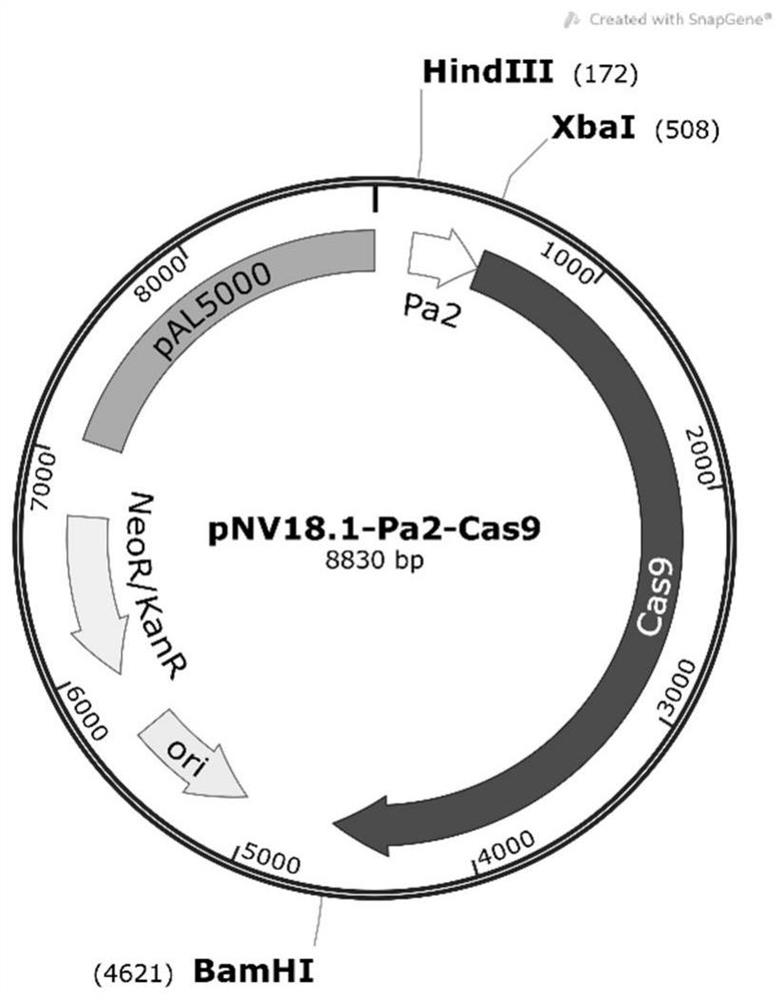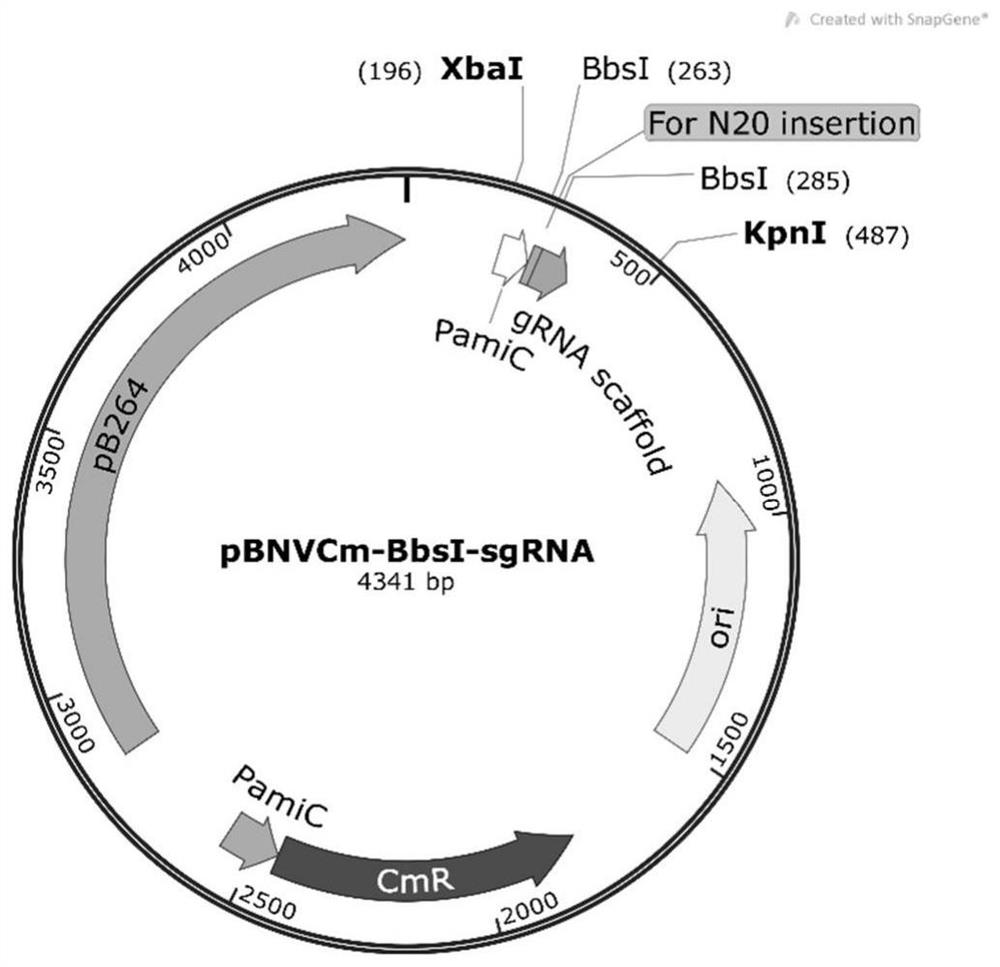A kind of genetically engineered rhodococcus and its construction method and application
A technology of genetic engineering and rhodococcus, applied in the field of genetic engineering, can solve problems such as low efficiency of homologous recombination and difficulty in gene manipulation of rhodococcus, achieve good application prospects, avoid plasmid stability, and improve catalytic stability
- Summary
- Abstract
- Description
- Claims
- Application Information
AI Technical Summary
Problems solved by technology
Method used
Image
Examples
Embodiment 1
[0042] Example 1 Construction of plasmid vectors pRCTc and pBNVCm with different resistance genes and different replicons
[0043] The CRISPR / Cas9 gene editing method established in the present invention needs to use different plasmid vectors to express different elements, so it is necessary to modify the existing plasmids to meet the experimental requirements. Plasmids pRCTc and pBNVCm are Escherichia coli-Rhodococcus shuttle plasmids, based on plasmid pNV18.1 (Chiba, et al., Jpn J Infect Dis 2007, 60(1), 45-47.), by replacing the resistance gene and Rhodococcus replicon engineered.
[0044] The plasmid pRCTc carries the tetracycline resistance gene, and the replicon is pRC4. The construction process is as follows: using the genome of Rhodococcus R. ruber TH3 (WO2009117843-A1) as a template, using primers fusion-Tc-F and fusion-Tc-R, PCR Amplify the tetracycline resistance gene; use the plasmid pNV18.1 as a template, use primers pNV-F and pNV-R, and amplify the pNV18.1 backb...
Embodiment 2
[0061] Example 2 Construction of Rhodococcus Overexpressing Recombinase Che9c60&61 and Analysis of Its Impact on Knockout Efficiency
[0062] This embodiment constructs the plasmid pRCTc-Pa2-Che9c60&61 carrying the recombinase (as attached figure 1 shown), transformed into Rhodococcus R.ruber TH to obtain R.ruber TH (Che9c60&61) overexpressing the recombinase. Taking amidase gene knockout as an example to evaluate the effect of recombinase on knockout efficiency, transform the homologous arm of amidase gene with chloramphenicol resistance gene into R.ruber TH (Che9c60&61) and R.ruber TH, and perform statistical transformation Number of children and knockout efficiency.
[0063]The construction method of the plasmid pRCTc-Pa2-Che9c60&61 is as follows: the recombinase Che9c60&61 was synthesized by Huada Qinglan Biotechnology (Wuxi) Co., Ltd., and the two segments contained XbaI and KpnI restriction sites, and the Che9c60&61 gene fragment was digested with XbaI and KpnI; Rhodoc...
Embodiment 3
[0078] Example 3 Establishment of a CRISPR / Cas9-based gene editing method for Rhodococcus to achieve seamless knockout of amidase
[0079] CRISPR / Cas9 requires two important elements to function, nuclease Cas9 and guide RNA (sgRNA). This embodiment needs to construct their expression vector pNV-Pa2-Cas9 (see attached figure 2 shown) and pBNVCm-BbsI-sgRNA (as attached image 3 shown); at the same time, in order to achieve gene knockout, it is also necessary to provide the homology arms needed to repair DNA double-strand breaks. The process of gene editing of Rhodococcus using CRISPR / Cas9 is attached Figure 5 shown, the specific details are described below.
[0080] The construction method of pNV-Pa2-Cas9 is as follows: use the plasmid pCAS9-mCherry (Addgene #80975) as a template, use primers XbaI-Cas9-F, BamHI-Cas9-R to amplify the Cas9 gene, and use XbaI and BamHI to digest the Cas9 gene and plasmid pNV-Pa2 (CN109182241A), after purification and recovery, T4 DNA ligase wa...
PUM
 Login to View More
Login to View More Abstract
Description
Claims
Application Information
 Login to View More
Login to View More - R&D
- Intellectual Property
- Life Sciences
- Materials
- Tech Scout
- Unparalleled Data Quality
- Higher Quality Content
- 60% Fewer Hallucinations
Browse by: Latest US Patents, China's latest patents, Technical Efficacy Thesaurus, Application Domain, Technology Topic, Popular Technical Reports.
© 2025 PatSnap. All rights reserved.Legal|Privacy policy|Modern Slavery Act Transparency Statement|Sitemap|About US| Contact US: help@patsnap.com



